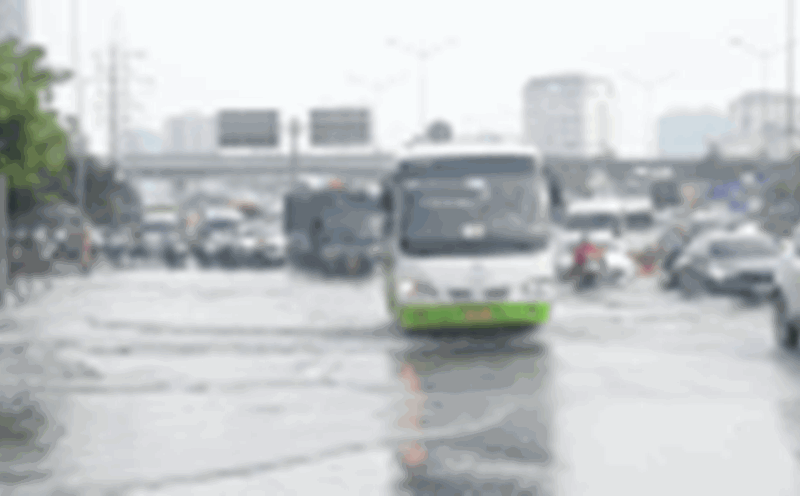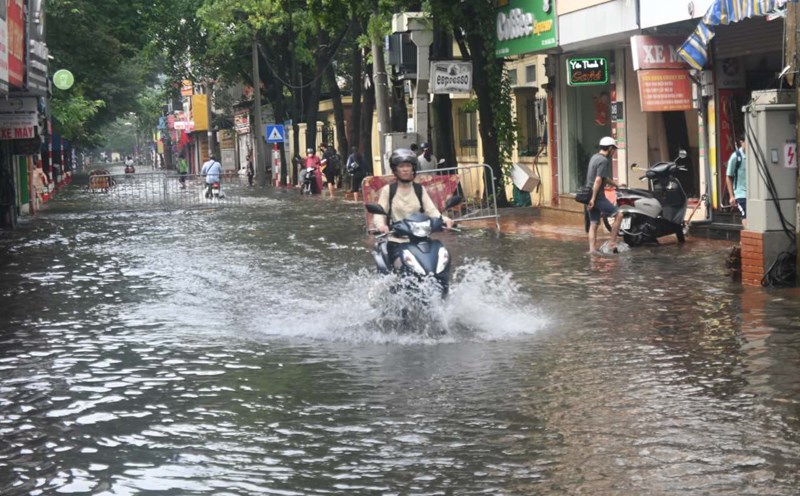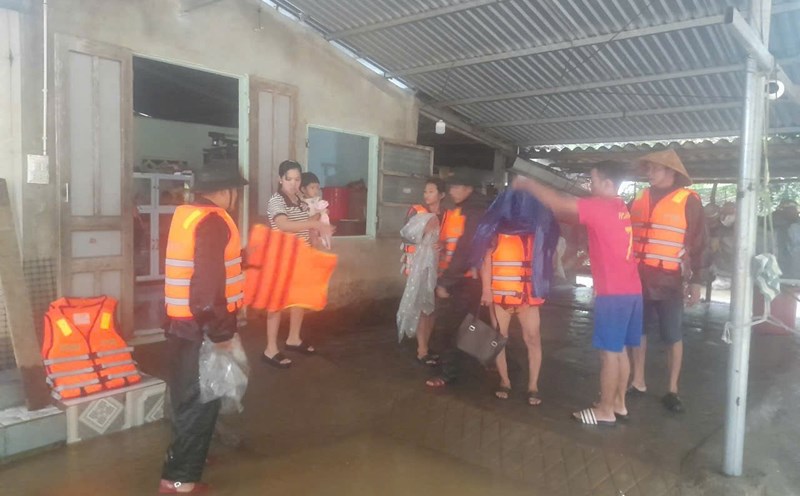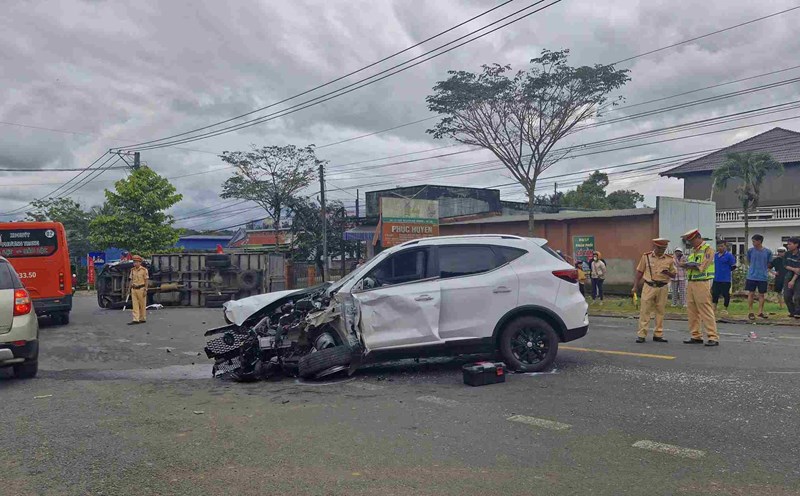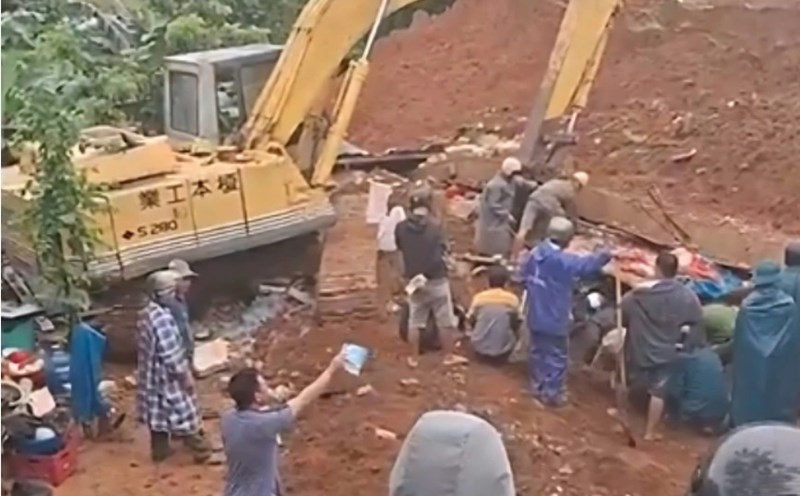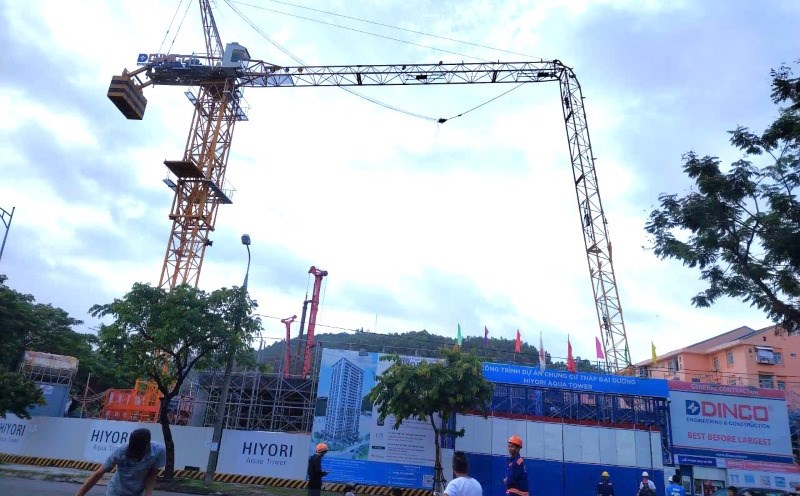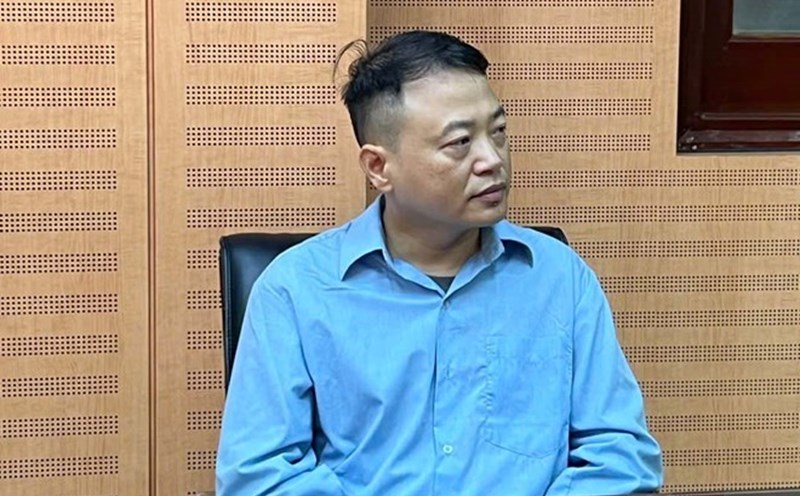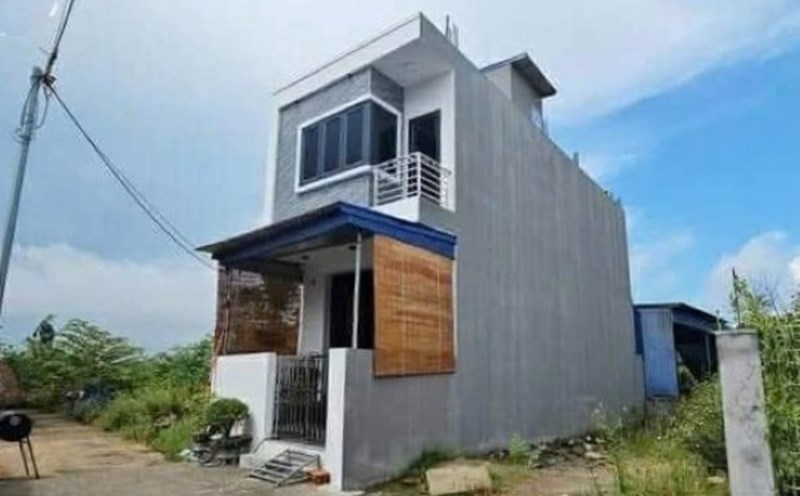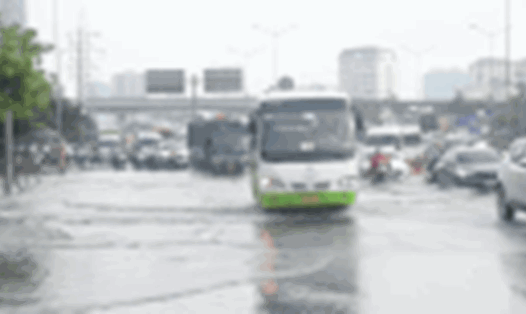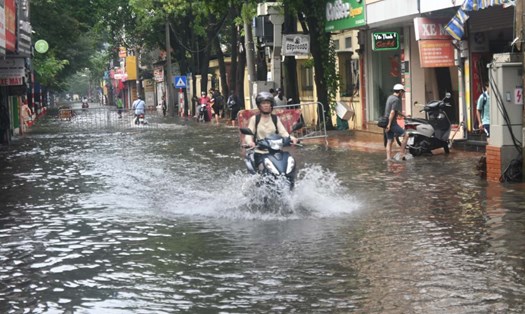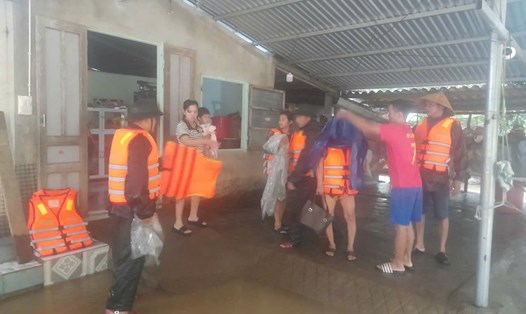Regarding the flooding situation in Hanoi's urban areas in early October 2025, speaking with a reporter from Lao Dong Newspaper, Mr. Bui Ngoc Uyen - Deputy Head of the Department of System - Environment - Digital Transformation of Hanoi Drainage One Member Co., Ltd. (Hanoi Drainage Company) - said that during the recent heavy rain, the city's urban area recorded about 82 flooding points. For this area, Hanoi Drainage Company will carry out drainage tasks that account for about 80%, the remaining 20% will be done by other enterprises.
According to Mr. Uyen, these flooded areas are divided into three main basins, including: To Lich River basin, Nhue River basin and Long Bien - Gia Lam basin.
Accordingly, the main cause of flooding in the To Lich River basin is due to rainfall exceeding the drainage capacity of the existing system, causing slow drainage, leading to local flooding at 42 points in this basin.
In the Nhue River basin, a similar situation occurred. The drainage system in this area depends on the Yen Nghia pumping station, but the station is still not operating at full capacity, leading to untimely drainage during heavy rains. According to statistics, 33 flooding spots were recorded in this area during the early rain in October 2025.
Regarding the Long Bien - Gia Lam basin, Mr. Bui Ngoc Uyen said that this area recorded 7 flooded spots. The main reason is that the drainage system has not been invested in synchronously and has not been completely connected to the general system. The drainage here mainly depends on self-flooding, so when there is prolonged heavy rain, the drainage cannot be done in time, causing local flooding.
Mr. Bui Ngoc Uyen also said that the rapid development of urban areas and transport infrastructure while drainage planning has not been invested in synchronously is one of the important reasons for the current flooding situation.
In many urban development areas, transport infrastructure is invested first, while drainage systems are behind, not invested in parallel. When heavy rain occurs, the water has no drainage, leading to local flooding, said Mr. Uyen.
Mr. Uyen cited that the section on Thang Long Avenue was flooded. Previously, the two sides of the road were mainly rice fields, and rainwater could naturally drain into low-lying areas. However, currently, both sides of the road have been invested in, forming many new urban areas. Natural drainage areas are blocked or isolated, making it impossible for rainwater to drain as before, leading to frequent flooding during heavy rains.
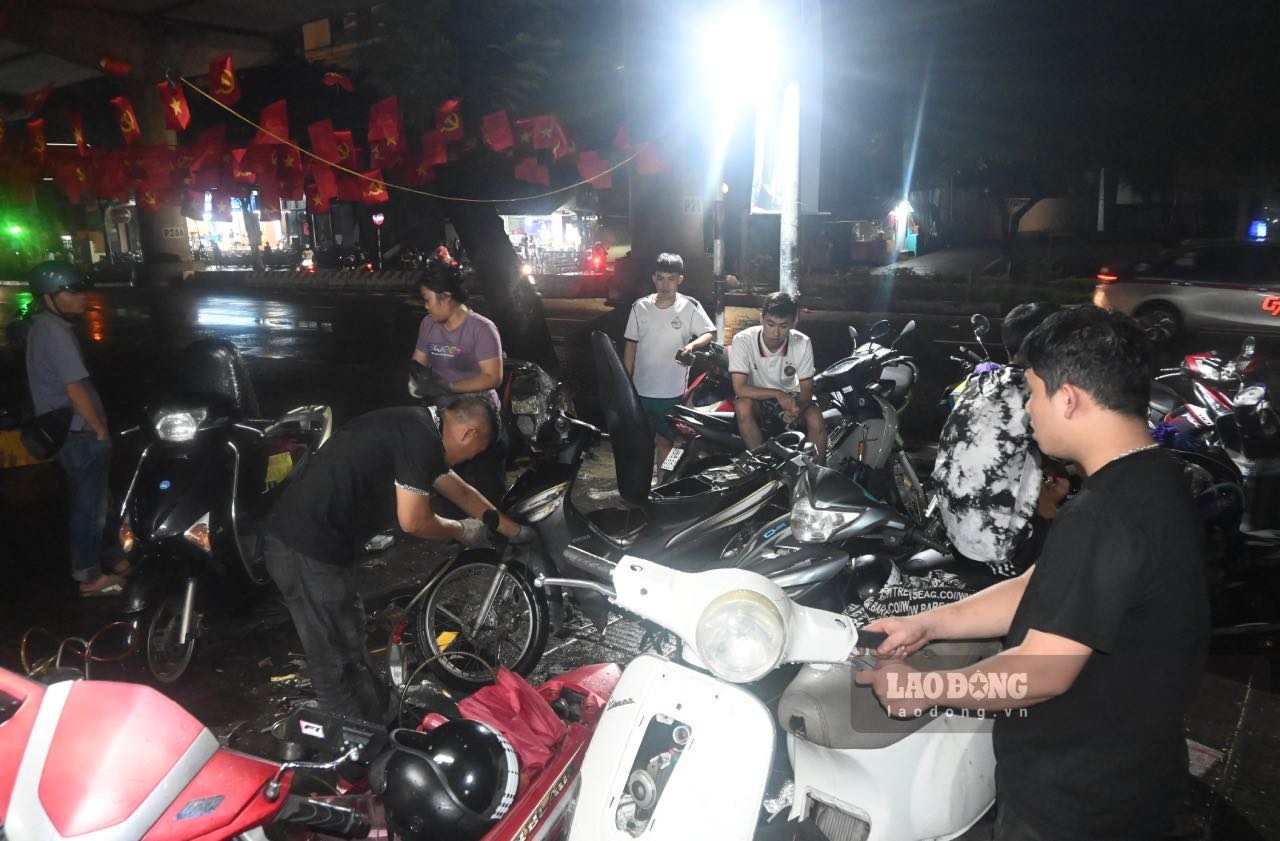
Mr. Bui Ngoc Uyen - Deputy Head of the System - Environment - Digital Transformation Department (Hanoi Drainage One Member Co., Ltd.) also affirmed that the unit is coordinating with relevant departments, branches and localities to review the entire drainage system, and at the same time propose solutions to increase the capacity of pumping station, renovate sewers, add regulating lakes and build new drainage pipes. The goal is to gradually overcome the flooding situation, ensuring safety and stabilizing the lives of people in the capital.

